Navigation
Install the app
How to install the app on iOS
Follow along with the video below to see how to install our site as a web app on your home screen.

Note: This feature currently requires accessing the site using the built-in Safari browser.
More options
You are using an out of date browser. It may not display this or other websites correctly.
You should upgrade or use an alternative browser.
You should upgrade or use an alternative browser.
I just learned about f-stop equivalency...
- Thread starter nerwin
- Start date
Doesn't everybody???As they say a little knowledge is very dangerous
I've always wondered if people think about this chit while they are taking pictures.
- Joined
- Dec 9, 2006
- Messages
- 21,447
- Reaction score
- 12,422
- Location
- Maryland
- Can others edit my Photos
- Photos OK to edit
I'm still trying to wrap my arms around specular highlights and how to work a flippin tri-pod.
F-stop equivalency? I'm banging my head against the wall.... Hedgecoe, Hedgecoe, ....oh boy
Sent from my XT1254 using Tapatalk
#ell - I've been trying to figure out how to load the jammin' film in the back of the D40.
Dave442
Been spending a lot of time on here!
- Joined
- Feb 1, 2015
- Messages
- 2,021
- Reaction score
- 567
I was watching a photography video this morning and learned about this. I had no idea there was such thing as f-stop equivalency.
So a Sony RX100 M3 24-70 or Nikon DL 24-85 have 35mm equivalency of focal length but not aperture. Their 35mm aperture equivalent is actually f/4.9-7.6.
I have to think this must have been a Tony Northrup video. He often talks about this f-stop equivalency between sensor sizes. He also has a video about DOF vs. sensor size (not the sensor but the distance relation based on lens for filling the same amount of area with subject on different size sensors).
jcdeboever
Been spending a lot of time on here!
- Joined
- Sep 5, 2015
- Messages
- 19,868
- Reaction score
- 16,081
- Location
- Michigan
- Can others edit my Photos
- Photos OK to edit
That funny right there.I'm still trying to wrap my arms around specular highlights and how to work a flippin tri-pod.
F-stop equivalency? I'm banging my head against the wall.... Hedgecoe, Hedgecoe, ....oh boy
Sent from my XT1254 using Tapatalk
#ell - I've been trying to figure out how to load the jammin' film in the back of the D40.
Sent from my XT1254 using Tapatalk
nerwin
Been spending a lot of time on here!
- Joined
- Jan 31, 2015
- Messages
- 3,804
- Reaction score
- 2,092
- Location
- Vermont
- Website
- nickerwin.com
- Can others edit my Photos
- Photos OK to edit
I was watching a photography video this morning and learned about this. I had no idea there was such thing as f-stop equivalency.
So a Sony RX100 M3 24-70 or Nikon DL 24-85 have 35mm equivalency of focal length but not aperture. Their 35mm aperture equivalent is actually f/4.9-7.6.
I have to think this must have been a Tony Northrup video. He often talks about this f-stop equivalency between sensor sizes. He also has a video about DOF vs. sensor size (not the sensor but the distance relation based on lens for filling the same amount of area with subject on different size sensors).
Damn, your good Dave. Hahaha. It was Tony who put the thought in my head...but I think I have a better understanding now.
Alexr25
No longer a newbie, moving up!
- Joined
- Aug 31, 2014
- Messages
- 397
- Reaction score
- 84
- Location
- Australia, near Melbourne
- Can others edit my Photos
- Photos OK to edit
Hopefully your understanding now is better than Tony's because his grasp of the subject is tenuous at best.It was Tony who put the thought in my head...but I think I have a better understanding now.
Solarflare
No longer a newbie, moving up!
- Joined
- May 24, 2012
- Messages
- 2,898
- Reaction score
- 395
*shrug* sorry, you can disagree with me a billion times, I'm still right and you're wrong, and very obviously so *shrug*
Again, just scroll to the end. All that matters is CoC. Thats all the sensor model does. Sensor size is irrelevant.
Alexr25
No longer a newbie, moving up!
- Joined
- Aug 31, 2014
- Messages
- 397
- Reaction score
- 84
- Location
- Australia, near Melbourne
- Can others edit my Photos
- Photos OK to edit
No Solarflare you are the one who is wrong. CoC IS a function of sensor size, or to to be more correct a function of the magnification that is applied to the final image which in turn is a function of sensor sensor size and final image size. A quick look at the equations for DoF and CoC would clearly show this.Again, just scroll to the end. All that matters is CoC. Thats all the sensor model does. Sensor size is irrelevant.
Solarflare
No longer a newbie, moving up!
- Joined
- May 24, 2012
- Messages
- 2,898
- Reaction score
- 395
Nope, obviously not.No Solarflare you are the one who is wrong. CoC IS a function of sensor size, or to to be more correct a function of the magnification that is applied to the final image which in turn is a function of sensor sensor size and final image size. A quick look at the equations for DoF and CoC would clearly show this.
CoC depends upon pixel size. On absolutely nothing else. The more megapixels our sensors pack, the smaller the CoCs we will tolerate, before seeing unsharpness.
And you can make exactly the same size print from a 24 megapixel full frame sensor as from a 24 megapixel APS-C sized sensor. I utterly fail to see how anyone could end up thinking otherwise. The QUALITY of the pixels might differ, but the count doesnt.
Braineack
Been spending a lot of time on here!
- Joined
- Jun 17, 2013
- Messages
- 13,214
- Reaction score
- 5,613
- Location
- NoVA
- Can others edit my Photos
- Photos OK to edit
CoC depends upon pixel size. On absolutely nothing else.
So there's no circle of confusion in film photography?
I can tell you what's causing a circle of confusion in this thread...
Ysarex
Been spending a lot of time on here!
- Joined
- Nov 27, 2011
- Messages
- 7,137
- Reaction score
- 3,687
- Location
- St. Louis
- Can others edit my Photos
- Photos OK to edit
*shrug* sorry, you can disagree with me a billion times, I'm still right and you're wrong, and very obviously so *shrug*
Again, just scroll to the end. All that matters is CoC. Thats all the sensor model does. Sensor size is irrelevant.
The following proves you wrong:
"In photography, the circle of confusion diameter limit (“CoC”) for the final image is often defined as the largest blur spot that will still be perceived by the human eye as a point.
With this definition, the CoC in the original image (the image on the film or electronic sensor) depends on three factors:
- Visual acuity. For most people, the closest comfortable viewing distance, termed the near distance for distinct vision (Ray 2000, 52), is approximately 25 cm. At this distance, a person with good vision can usually distinguish an image resolution of 5 line pairs per millimeter (lp/mm), equivalent to a CoC of 0.2 mm in the final image.
- Viewing conditions. If the final image is viewed at approximately 25 cm, a final-image CoC of 0.2 mm often is appropriate. A comfortable viewing distance is also one at which the angle of view is approximately 60° (Ray 2000, 52); at a distance of 25 cm, this corresponds to about 30 cm, approximately the diagonal of an 8″×10″ image. It often may be reasonable to assume that, for whole-image viewing, a final image larger than 8″×10″ will be viewed at a distance correspondingly greater than 25 cm, and for which a larger CoC may be acceptable; the original-image CoC is then the same as that determined from the standard final-image size and viewing distance. But if the larger final image will be viewed at the normal distance of 25 cm, a smaller original-image CoC will be needed to provide acceptable sharpness.
- Enlargement from the original image to the final image. If there is no enlargement (e.g., a contact print of an 8×10 original image), the CoC for the original image is the same as that in the final image. But if, for example, the long dimension of a 35 mm original image is enlarged to 25 cm (10 inches), the enlargement is approximately 7×, and the CoC for the original image is 0.2 mm / 7, or 0.029 mm."
Reference: Circle of confusion - Wikipedia, the free encyclopedia
Here is the standard formula for hyperfocal distance:
Where H = hyper focal distance, f = focal length, N = f stop, and c = circle of confusion. The formula requires a value for c.
Reference: Hyperfocal distance - Wikipedia, the free encyclopedia
You are now proven wrong with the math provided. Unless you can disprove the math and or references provided you will remain proven wrong regardless of how many times you *shrug*.
Joe
Alexr25
No longer a newbie, moving up!
- Joined
- Aug 31, 2014
- Messages
- 397
- Reaction score
- 84
- Location
- Australia, near Melbourne
- Can others edit my Photos
- Photos OK to edit
CoC has nothing to do with pixel size and everything to do with image magnification. As I suggested before you should take a look the the equations for CoC, nowhere will you find a term for pixel size, in fact the concept of CoC was formulated long before there were such things as pixels and deals with the limits of resolution of human vision as applied in the final displayed image.CoC depends upon pixel size. On absolutely nothing else. The more megapixels our sensors pack, the smaller the CoCs we will tolerate, before seeing unsharpness.
Gentlemen, ladies, you are muddling my brain. Allow me to present what I have held to be true this far. Acceptable CoC is what you need on your sensor or negative in order to stay within the 0.2 mm limit in an 8x10 inch print. The table above makes perfect sense. Smaller neg calls for more lp/mm because of the bigger enlargement factor. The sensor will only come into play, as will film grain, when it is not suitable to record the necessary lp/mm. Other than that, it's a matter of optics. This may be a simplification, but it was good enough for the manual of my 1957 Rolleiflex, and I think it will have to be for me.
Most reactions
-
 426
426 -
 292
292 -
 285
285 -
 270
270 -
 221
221 -
 204
204 -
 185
185 -
 179
179 -
 168
168 -
 166
166 -
 146
146 -
 133
133 -
 120
120 -
 95
95 -
I
94
Similar threads
- Replies
- 18
- Views
- 1K
- Replies
- 13
- Views
- 1K
- Replies
- 5
- Views
- 511



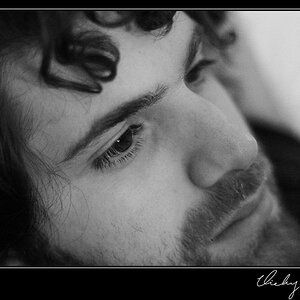
![[No title]](/data/xfmg/thumbnail/34/34083-76406a409bc520ead3cc11af09ebd257.jpg?1619736269)
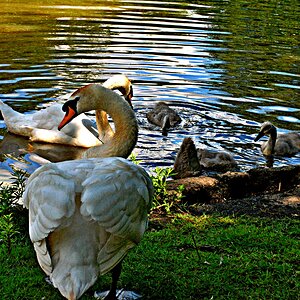


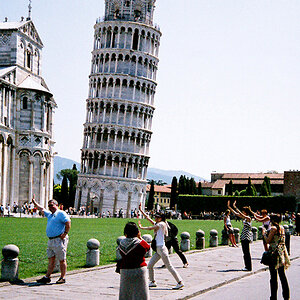
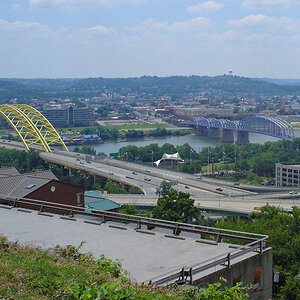

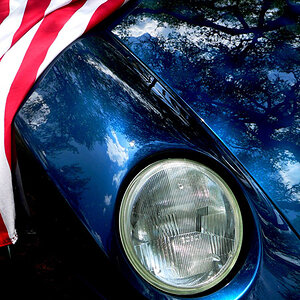
![[No title]](/data/xfmg/thumbnail/42/42276-99df5da06c3e5dc83ae4bab11e935910.jpg?1619740085)
